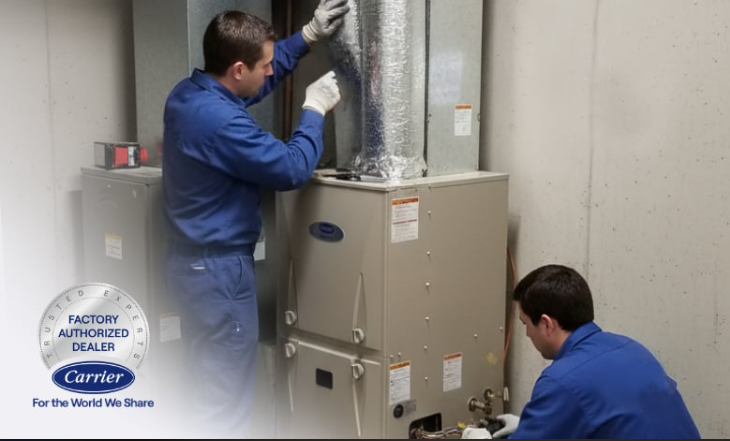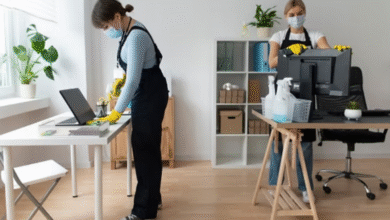Is Your Carrier Furnace Not Heating?10 Troubleshooting Tips to Try Today

There’s nothing more frustrating than turning on your furnace on a chilly Canadian morning and feeling nothing but cold air. If your Carrier furnace isn’t heating, it can quickly turn a cozy home into an uncomfortable space.
While some furnace issues require professional help, many common problems can be diagnosed and even fixed without calling a technician. Understanding the possible reasons behind a furnace that won’t heat and knowing where to start can save time, stress, and sometimes even money.
This article walks you through ten practical troubleshooting tips you can try today, helping you get your home warm again without unnecessary delays.
1. Check Your Thermostat Settings
Sometimes, the simplest issues are the ones we overlook. Before diving into more complicated fixes, take a moment to check your thermostat. Make sure it’s set to “heat” mode and that the temperature is higher than the current room temperature.
If your thermostat runs on batteries, low or dead batteries could prevent it from sending the right signals to your furnace. Replacing them is quick and often solves the problem immediately.
Also, consider whether your thermostat is positioned correctly. If it’s near a heat source, direct sunlight, or drafty areas, it might not read the room temperature accurately, causing your furnace to behave unexpectedly. A small adjustment in placement or settings can sometimes restore normal heating without further effort.
See also: Seasonal Home Care: Roofing Company Expertise with Siding Solutions
2. Inspect the Furnace Power Source
If your thermostat is set correctly but your furnace still isn’t heating, the next step is to check the power supply. Even the most reliable furnace won’t work if it isn’t getting electricity. Start by making sure the furnace switch is turned on, which is usually located near the unit itself.
Next, check your home’s circuit breaker. Sometimes a breaker can trip without you noticing, cutting power to the furnace. Simply resetting the breaker may restore operation.
It’s also worth inspecting the furnace’s power cord and any visible wiring for damage. If you notice frayed wires or anything that looks unsafe, avoid trying to fix it yourself. Instead, contact a qualified professional to prevent potential hazards.
3. Look at the Air Filter
A dirty or clogged air filter is one of the most common reasons a furnace stops heating properly. When airflow is restricted, the furnace can overheat or fail to distribute warm air throughout your home.
Take a few minutes to locate your furnace’s air filter and inspect it. If it looks dark, dusty, or packed with debris, it’s time to replace it. Most filters are inexpensive and easy to swap out, and doing so can make a noticeable difference in how well your furnace performs.
Even if the filter doesn’t look overly dirty, it’s a good idea to check it regularly. During the winter months, a monthly inspection can help your furnace run efficiently and prevent unnecessary wear.
4. Confirm the Gas Supply Is On
If your furnace isn’t heating, it might be as simple as the gas supply being turned off or interrupted. Gas furnaces rely on a steady supply of fuel to operate, so checking the gas valve is an important step.
Locate the gas valve near your furnace and make sure it’s fully open. If you recently had any work done on your home’s gas lines, confirm that the service was restored properly.
It’s also worth noting that if you smell gas or suspect a leak, do not attempt to fix it yourself. Leave the area immediately and contact your gas provider or a licensed technician. Safety always comes first when dealing with gas appliances.
5. Examine the Pilot Light or Ignition System
For older furnaces with a pilot light, a simple outage can be the reason your home isn’t getting warm. Check to see if the pilot light is lit. If it’s gone out, carefully follow the manufacturer’s instructions to relight it. Make sure you take all safety precautions and avoid rushing the process.
Modern Carrier furnaces often use an electronic ignition system instead of a pilot light. If your furnace isn’t starting, it could be an issue with the igniter. Look for any signs of damage or dirt around the ignition components, as buildup can prevent proper functioning.
If you’re uncomfortable inspecting or relighting the system yourself, it’s safer to call a professional. Even a minor misstep with ignition systems can be risky, so don’t force it if you’re unsure.
6. Secure the Furnace Door Panel
It might seem like a small detail, but a furnace won’t operate if its access panel or door isn’t properly closed. Many modern furnaces have safety switches that prevent the system from running when the panel is loose or missing.
Take a moment to check the furnace door and make sure it’s firmly in place. Sometimes, the panel can shift slightly after maintenance or cleaning, which can stop the furnace from starting.
If the panel is damaged or doesn’t fit properly, it’s best to have it repaired or replaced. Running the furnace with a faulty panel can be unsafe and may cause additional issues over time.
7. Check the Furnace Flame Sensor
The flame sensor is a small but crucial part of your furnace. It tells the system when the burners are lit, ensuring safe operation. If it gets dirty or coated with residue, the furnace may shut down or fail to ignite.
To inspect it, turn off the furnace and locate the flame sensor, usually a thin metal rod near the burners. Carefully clean it with a soft cloth or fine sandpaper to remove any buildup. Avoid using harsh chemicals or excessive force.
After cleaning, restart the furnace and see if it operates normally. A quick flame sensor check can often solve heating problems without requiring a costly service call.
8. Inspect the Condensate Line
If your Carrier furnace has a high-efficiency setup, it likely has a condensate line that drains away excess moisture. When this line becomes clogged, it can trigger a safety switch and prevent the furnace from running.
Check the line for any visible blockages, such as dirt, debris, or even algae growth. Gently clear the line with a small brush or use a wet-dry vacuum to remove any obstructions. Make sure the line drains properly into the designated area.
Regularly inspecting the condensate line during the winter months can help prevent unexpected shutdowns and keep your furnace running smoothly.
9. Unblock Air Vents and Registers
Even if your furnace is working perfectly, blocked vents and registers can prevent warm air from reaching your living spaces. Furniture, rugs, or other objects placed in front of vents can restrict airflow and make it feel like the furnace isn’t heating.
Take a quick walk through your home and ensure all supply and return vents are open and unobstructed. In some cases, dust buildup inside the vents can also reduce airflow, so a gentle vacuum or cleaning might be necessary.
Keeping vents clear not only improves heating performance but also helps your furnace operate more efficiently, reducing strain on the system and keeping energy costs in check.
10. Reset the Furnace
Sometimes, furnaces simply need a reset to clear temporary glitches. Before attempting this, make sure you’ve addressed the previous troubleshooting steps, such as checking the thermostat, power supply, and air filter.
To reset your furnace, locate the reset button, which is usually found near the blower motor. Press and hold it for a few seconds, then release. Some furnaces may have a switch or breaker that also serves as a reset, so consult your manual if you’re unsure.
After resetting, give the furnace a few minutes to restart and observe whether it begins producing heat. A simple reset can often restore normal operation without the need for a professional call.
When to Call a Professional
While many furnace issues can be fixed with simple troubleshooting, some situations require the expertise of a qualified technician. Knowing when to step back and call a professional can save you time, prevent damage, and keep your home safe during the cold months.
Here are some scenarios where it’s best to reach out for professional help:
- Persistent heating problems: If your furnace continues to fail after checking the thermostat, power, and filters, a deeper issue may be at play.
- Strange noises or smells: Banging, rattling, or unusual burning smells can indicate mechanical or electrical problems that need professional attention.
- Frequent cycling on and off: If your furnace turns on and off repeatedly, it could be a sign of a malfunctioning component or airflow issue.
- Pilot or ignition issues beyond basic fixes: Electronic ignitions or pilot lights that won’t stay lit after simple checks should be handled by a trained technician.
- Gas or safety concerns: Any suspicion of gas leaks, carbon monoxide, or electrical hazards requires immediate professional intervention.
If you encounter any of these situations, it’s wise to contact Infiniti Home Comfort for furnace repair services in Whitby. They can quickly diagnose the problem, make necessary repairs, and ensure your heating system operates safely and efficiently.
Final Words
A Carrier furnace that isn’t heating can turn a comfortable home into an uncomfortable space, but many issues can be resolved with careful troubleshooting. From checking your thermostat and power supply to inspecting the air filter, vents, and flame sensor, small steps often make a big difference.
It’s important to know your limits and recognize when a problem requires professional expertise. Taking quick action on minor issues and calling a technician for more complex problems ensures your furnace runs safely and efficiently throughout the cold season.
By following these troubleshooting tips, you can stay ahead of common furnace problems and keep your home warm and cozy when it matters most.




